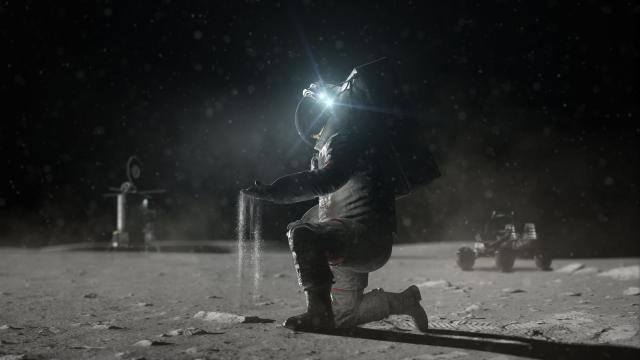A new decadal survey from the National Academies of Sciences, Engineering, and Medicine just dropped, and establishing a sustained human presence off-Earth is on the docket. But NASA’s Division of Biological and Physical Sciences (BPS) is underfunded, the survey reports, which could jeopardize humankind’s ability to actually establish such a presence.
The 351-page document follows the National Academies’ release of astronomical and astrophysical goals for the next decade, published in 2021, and the 2022 publication of decadal goals in planetary defence and science. Those surveys emphasized the importance of probes to distant worlds like Uranus and the discovery of habitable worlds besides our own.
The BPS division covers the sciences necessary to sustain life in space—issues like how to protect humans from the hostile environment, how to cultivate food, and how to generate power. And according to the new survey, the science budget towards BPS “must rise by a factor of 10 well before the end of the decade” in order to achieve the division’s science goals.
As stated in the report, a factor of 10 is a significant jump, but one that’s necessary both to “reflect the current national need” for the BPS program and to build the program’s size in a way that makes its goals achievable.
“Research in the space environment has taken remarkable steps over the last decade, but NASA, the rest of the U.S. government, and the wider space community globally have bold exploration plans that require commensurate investments in biological and physical science research,” said Krystyn Van Vliet, a co-chair of the report’s steering committee and vice president for research and innovation at Cornell University, in a National Academies release.
The report also outlined 11 key scientific questions across three themes—Adapting to Space, Living and Traveling in Space, and Probing Phenomena Hidden by Gravity or Terrestrial Limitations—that it deemed priorities for the next decade.
Some questions are about the scientific nature of the cosmos, but others are focused on how a human presence in space can be sustained, including one question about genetic diversity and physiological adaptation to space, and one about multi-generation effects of space on reproduction and development. The Probing Phenomena Hidden by Gravity or Terrestrial Limitations theme includes questions about how organisms respond to gravity, as well as what types of new physics and inklings about general relativity and quantum mechanics might be gleaned from experiments done in space.
“Sustained human exploration beyond low Earth orbit presents science objectives and challenges we haven’t yet completed or in some cases even approached through the era of the International Space Station―crews will spend more time beyond low Earth orbit, in transit, and while living and working in lunar or Martian stations,” said steering committee co-chair Robert Ferl, assistant vice president of research at the University of Florida, in the same release.
Sustained human presence off-Earth already exists in the ISS, but the Artemis missions will set the stage of an established human presence on the Moon. Increased access to space will also allow more scientific projects to take place off-Earth, including on the Moon.
The report denoted two high-priority research campaigns that should be funded with the improved BPS budget: the Bioregenerative Life Support Systems (or BliSS) project to help create a sustainable environment for biological support systems off-planet, and the elaborately-acronymed Manufacturing mATerRIals and proCEsses for Sustainability in space (or MATRICES), which will seek to make manufacturing off-Earth sustainable.
The key issue in making the future of spaceflight happen, though, is cost. Budget cuts to NASA—as well as running over budget on some projects—means some missions may get delayed or outright canceled. With the Artemis program and the international Mars Sample Return mission consuming significant portions of NASA’s budgetary pie, little remains for unrelated and peripheral projects. If BPS gets the funding the recent decadal survey recommends, the future of human exploration will be brighter. But it’s a big if.
